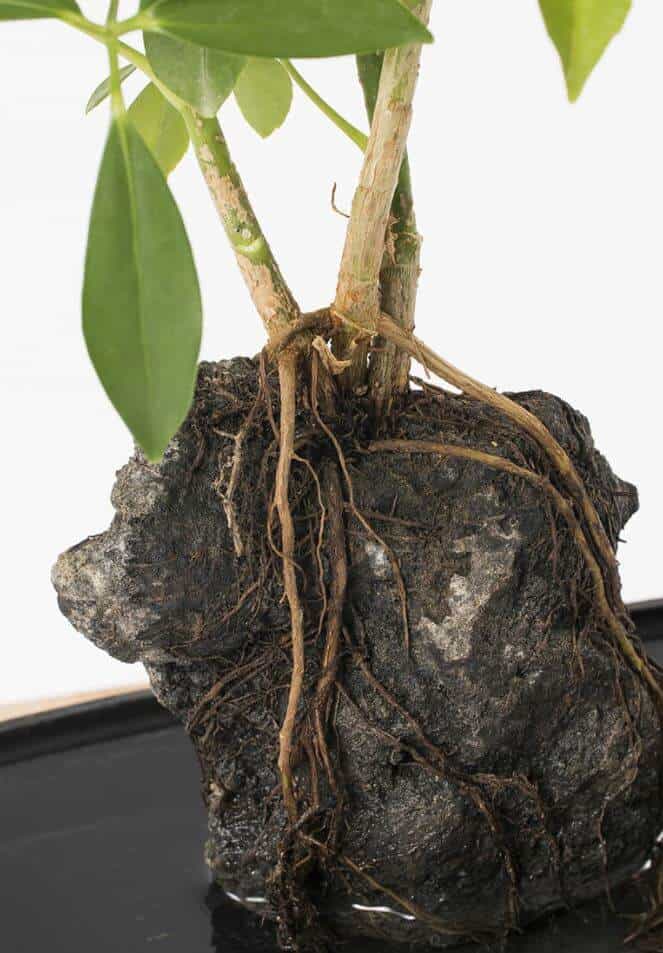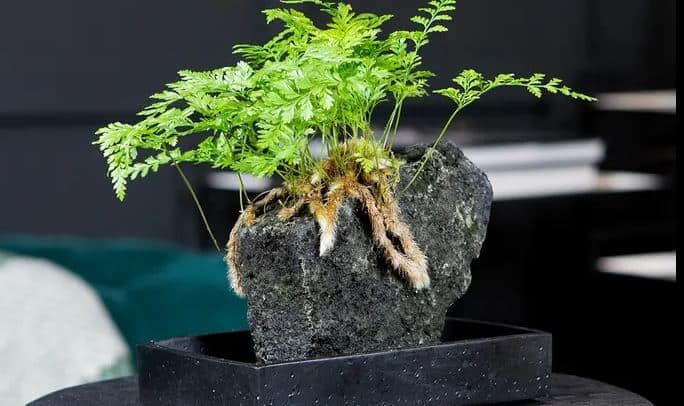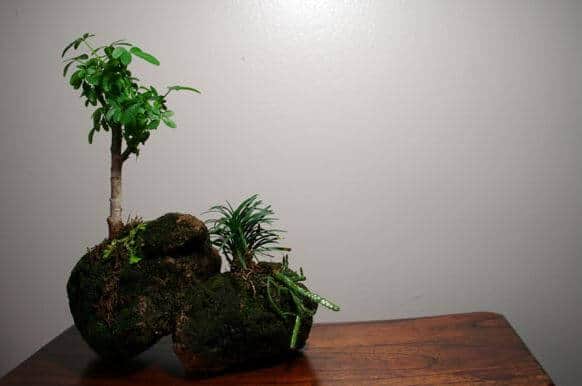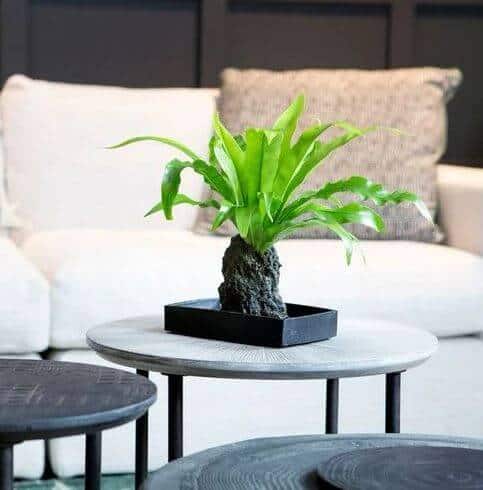Last Updated on March 13, 2023 by a Friendly Gardener
Never heard of a Lava plant? You’re not alone! A lava rock plant is not a specific plant species but a method, albeit original, for plant cultivation. While this may sound a bit out of the ordinary, using lava rock as a growing medium is a unique way to grow and display plants.
Lava rocks are taken from volcanoes like Mount Vesuvius towering over Naples, Sicily’s Mount Etna, or Hawaii’s Mauna Loa. Lava rocks are a form of permanent mulch that can offer plants and vegetation moisture, nutrition, and support. These rocks are extremely porous meaning that they are great when it comes to moisture retention yet offer excellent drainage.
Theguardian.com reports that lava rock “can wick water up as high as 20-30 cm.” and that the technique of using lava rock as a growing medium is available commercially from a Dutch grower of ferns, Schefflera, and Ficus known as ‘Life on Lava’.
What Is Lava Rock?

Any kind of rock that is formed when magma or ‘lava’ erupts from a volcano on the earth’s surface and subsequently cools. As such, a variety of rock types are a part of this category including basalt, feather rock, obsidian, or pumice. Known as igneous rocks, their composition is similar to glass as they shatter into exceptionally sharp shards.
As the lava bubbles up to the earth’s surface, it features air bubbles that will pop open as the magma dries leaving a very porous, lightweight kind of rock with holes. Lava rock is formed in three basic colors: gray, reddish-brown, and black, and is determined by the minerals present in the magma. The reddish tint appears when the iron present oxidizes during cooling.
Lava rocks are categorized as mafic (containing magnesium and iron) or felsic (containing silicon and aluminum minerals). They are rich in numerous minerals.
Pumice is the lightest of these rocks followed by feather rock. These are often found in landscaping and used as an alternative to artificial mulch. It is a favorite for use in outdoor gardens thanks to its lightweight, porous nature, and success in suppressing weeds, protecting from soil erosion, and very low maintenance requirements.
One advantage to using lava rock as a growing medium as it will aid in protecting your plant from root rot due to excessive watering that would leave soil waterlogged and soggy.
Using Lava Rock as a Growing Medium

Should you decide that you wish to cultivate a plant on lava rock, this medium can easily be chiseled into the form you want to grow your selected plant. You can choose to drill small holes or depressions in it. Lava rock is usually sold in nurseries and garden centers, so it shouldn’t be that difficult to find. A larger piece can be broken into smaller pieces to suit your needs.
Rinse your lava rock thoroughly, ideally with collected rainwater, but tap water will do. This is recommended to remove any residue from the rock. Place a plant, or stem cuttings into a hole in the rock or you can latch them onto the rock using a tie or rubber band. Plants with shallow root systems are specially adapted to this growing medium. Place your rock in a shallow dish and fill the dish about two-thirds of its depth with water.
You can also opt to use smaller lava rock pieces. Fill a glass dish or pot halfway with the rock pieces, place your plant or cuttings in, and then cover roots with more small lava rock pieces and water generously.
Lava Rock Plant Care

When using lava rock as your growing medium, keep these suggestions in mind for successful lava rock cultivation.
Light
Lava rock likes generous bright sunlight exposure, nonetheless, do not place in hot, direct sun in the afternoon in hot climates or during the summer season.
Water

Lava rock should not be permitted to dry out when used as a growing medium. Always maintain a minimum amount of water in a shallow dish, tray, or pot containing lava rock. Your selected plant will take water as necessary. When using it as a permanent growing medium, avoid using municipal tap water. City water usually contains some lime which causes lava rock to deteriorate. Collected rainwater is ideal, but lake, river, or purified water are great alternatives. If you have no choice but to use city tap water, allow it to stand overnight before using it on a lava rock. Rocks can be occasionally misted to help root systems remain hydrated.
Feeding
Immediate feeding using fertilizer is unnecessary as your plant will gather nutrition directly from the lava rock.
Pruning

Root systems can eventually outgrow your chosen piece of lava rock. You can trim excess root ends as needed.
Types of Plants Suited for Lava Rock Cultivation

Many plants can be cultivated using lava rock. The only plants to avoid are those that require moisture constantly and plants featuring very large extended root systems. Succulents, air plants (Tillandsia), and even some grasses are ideal. Several small succulents can make an appealing display when cultivated on these rocks. Succulents such as Echeveria, Sedum, and Euphorbia boast very shallow root systems making them ideal to set in small depressions in lava rock.
Epiphytes which naturally latch onto host structures in their natural habitats are particularly adapted to lava rock cultivation. Orchids (Orchidaceae) and Anthuriums (Anthurium andraeanum) are popular choices. Types of ferns also work well including Staghorn ferns (Platycertum), Kangaroo Palm ferns (Microsorum Diversifollum), Rabbit’s-foot ferns (Davallia Fejeensis), and Spleenwort (Asplenium) merit consideration. The Schefflera Arboricola or Dwarf umbrella tree is also a favorite as a lava plant due to its low maintenance requirements.
Finally, if you enjoy air plants, the Tillandsia species are ideal as lava plants. These delightful plants grow naturally on shrubs, bushes, and rocks and need only moisture making lava rock perfect to latch onto. You can either set them atop a piece or slab or tie or glue the base of a Tillandsia to a hanging piece of volcanic rock for a unique plant display that’s certain to be a conversation piece.

